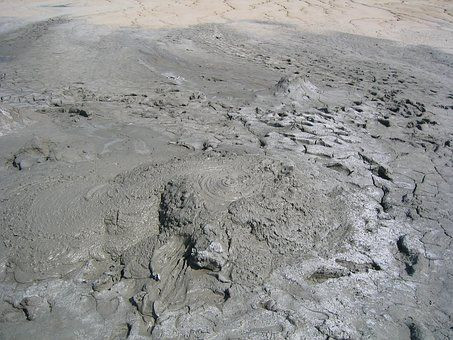Huge Fireball Caused By 'Mud Volcano' Spotted Near Azerbaijani Gas Field
KEY POINTS
- The explosion happened in Dashli Island mud volcano Sunday
- Experts said the height of the flame column was over 500 meters
- Similar eruptions occurred on Dashli Island in 1920 and 1945
A massive fireball that erupted dangerously close to Azerbaijan's second-largest natural gas field on Sunday may have been caused by a "mud volcano" eruption, experts said.
The tower of fire was spotted about 10 kilometers off the Umid gas field located in the Baku archipelago, reported Bloomberg.
Azerbaijan's Emergency Ministry and the State Oil Company were quick to dismiss speculations that the explosion was caused by an oil rig or ship. Officials added that the explosion didn’t affect nearby oil and natural gas platforms.
According to experts, Sunday's explosion happened in Dashli Island mud volcano, one of the 400 active mud volcanoes in and around Azerbaijan. Similar eruptions of flammable hydrocarbon gas had been reported in 1920 and 1945.
"It has been known that the height of the flame column registered as a result of the strong eruption of the Dashli volcano was more than 500 m. This is most likely due to the fact that the volcano did not erupt for a long time and accumulated a lot of energy," Azerbaijani news agency APA quoted Orxan Abbasov, a geophysicist at the Azerbaijan National Academy of Sciences.
Meanwhile, multiple videos of the eruption are now doing rounds on social media, many capturing the stunning visuals of the "ocean on fire."
Another video of explosion https://t.co/qlgjvQSBC8 pic.twitter.com/Y2XV2vepuM
— Liveuamap (@Liveuamap) July 4, 2021
According to experts, there are about 1,100 identified mud volcanoes in the world. "Eruptions of mud volcanoes are driven by a deep mud reservoir that is connected to the surface," senior meteorologist Tyler Roys was quoted by Accuweather.
He said when mud volcanoes erupt, it throws up boulders and rocks, besides mud. "The majority, about 86 percent, of the gas released from an explosion is methane," Roys added.
The fire column can happen in two ways. While the rocks and debris expelled during the eruption smash into each other, sparks can be formed that light up the flammable gas in place, which in most cases is methane. Since methane gas is highly flammable, it reacts explosively, forming fireballs.
Another theory involves pressure. Many experts think the pressure change during the explosion is strong enough to ignite the gas.
However, in most cases, the eruptions are unspectacular with water and mud bubbling out of the ground. These are popularly used as spa-like mud baths.

© Copyright IBTimes 2025. All rights reserved.





















